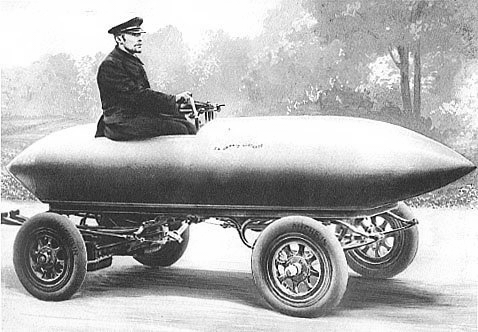The Rise Fall and Rise of Electric Cars (Part 1)
by Dan Hackett
01/09/2016 11:16
Share

The Rise Fall and Rise of Electric Cars (Part 1)
Electric cars are a contradiction: at the same time, they represent a futuristic vision of emissions free driving, yet electrically powered cars have been around for over one hundred and fifty years, and ruled all land speed records until the turn of the twentieth century. They may have been sidelined through the past century, however today EV’s are more popular than ever, and their popularity is growing year on year. So, in light of the rise of the electric vehicle, let�s take a walk down memory lane. Electric cars: this is your life!
The story of the development of electric transport starts in 1828, in Hungary, where Hungarian inventor �nyos Jedlik added an electric motor he�d designed to one of the earliest cars. At this point, a ‘car’ was essentially a horse drawn carriage, sans horses. 6 years later, in 1834, US blacksmith Thomas Davenport hammered together a similar vehicle which ran on a short electrified track. The next year, a Dutch professor figured out how to power a small scale car with a non-rechargeable cell.
Towards the end of the 19th century, the globe hopping story of the EV takes us to good old Blighty, where inventor Thomas Parker, credited with the electrification of the London Underground and overhead tramways, started tinkering with electric cars. He produced his first one in 1884, using specially designed high-capacity batteries, which were rechargeable. At least part of his motives for these endeavours is thought to be his concern about pollution in the capital city.
As well as the UK, France and Germany took a keen interest in developing electric transport systems, with the US not far behind. Leading up to the beginning of the twentieth century, all manner of locomotives, tramways and mine carts had been electrified. It was during this rush of enthusiasm that Belgian race driver Camille Jenatzy broke the 62mph (100km/h) speed barrier, maxing out at 65.79 miles per hour in his rocket-shaped vehicle. Incredibly, this was achieved in 1899, one hundred and seventeen years ago.
 What a hero.
What a hero.
Throughout the 1890’s and 1900’s, passion for electric motors peaked, and this time is considered the technology’s golden era. Battery powered taxis took to the streets of London in 1897, nicknamed ‘hummingbirds’ due to the sound of their motors. While EV’s may have held the land speed record, the everyday models on the roads of the UK usually had a top speed in the 30pmh’s. This made them slower than their steam or petrol powered counterparts, however electric vehicles were largely preferable due to the fact they didn’t have the vibration, noise or smell which was so prevalent in their competitors. Additionally, electric motors didn’t require hand cranking to start, which petrol engines did. Nobody wants to stand outside for 5 minutes furiously cranking the engine before you can pop down to the shops.
Electric cars were especially popular as city cars, where their limited range wasn�t an issue. In the US, which eventually overtook Europe in production of electric cars, 38% of cars were electric, compared to 40% powered by steam and a mere 22% by gasoline. The cars themselves were huge and ornately designed, predominantly used by wealthy families and decorated with lavish interiors. Through the 1910’s, huge numbers were sold throughout the world, running on replaceable batteries.
In the 1920’s, due to the rapidly changing nature of driving, electric cars sales slowed, and went into decline. Reasons for this include improving road conditions meaning cars were travelling further, and EVs limited range became an issue. Additionally, discoveries of vast petroleum sources meant petrol was cheaply available, and gradually, petrol powered cars grew to travel faster and further than their eco-friendly counterparts. Further tinkering with petrol engines eliminated the need for the massive comedy hand crank at the front, and both the noise and smell was reduced by mufflers. Basically, driving got a lot nicer. Throw in the towering automotive figure of Henry Ford arriving on the scene heralding low priced petrol cars, and it looked as though the electric car had had its moment in the sun.
With the electric car virtually disappeared from the world’s roads by the early 1930’s, drivers at the time would be shocked to learn that today, EVs are more popular than they have ever been. In the second half of the motor-oil-stained tapestry of the electric car’s eclectic history, we’ll take a look at the 1990’s reigniting of interest, and the developments that has led the electric car, at one time the ghost of motors past, to the car of the future.